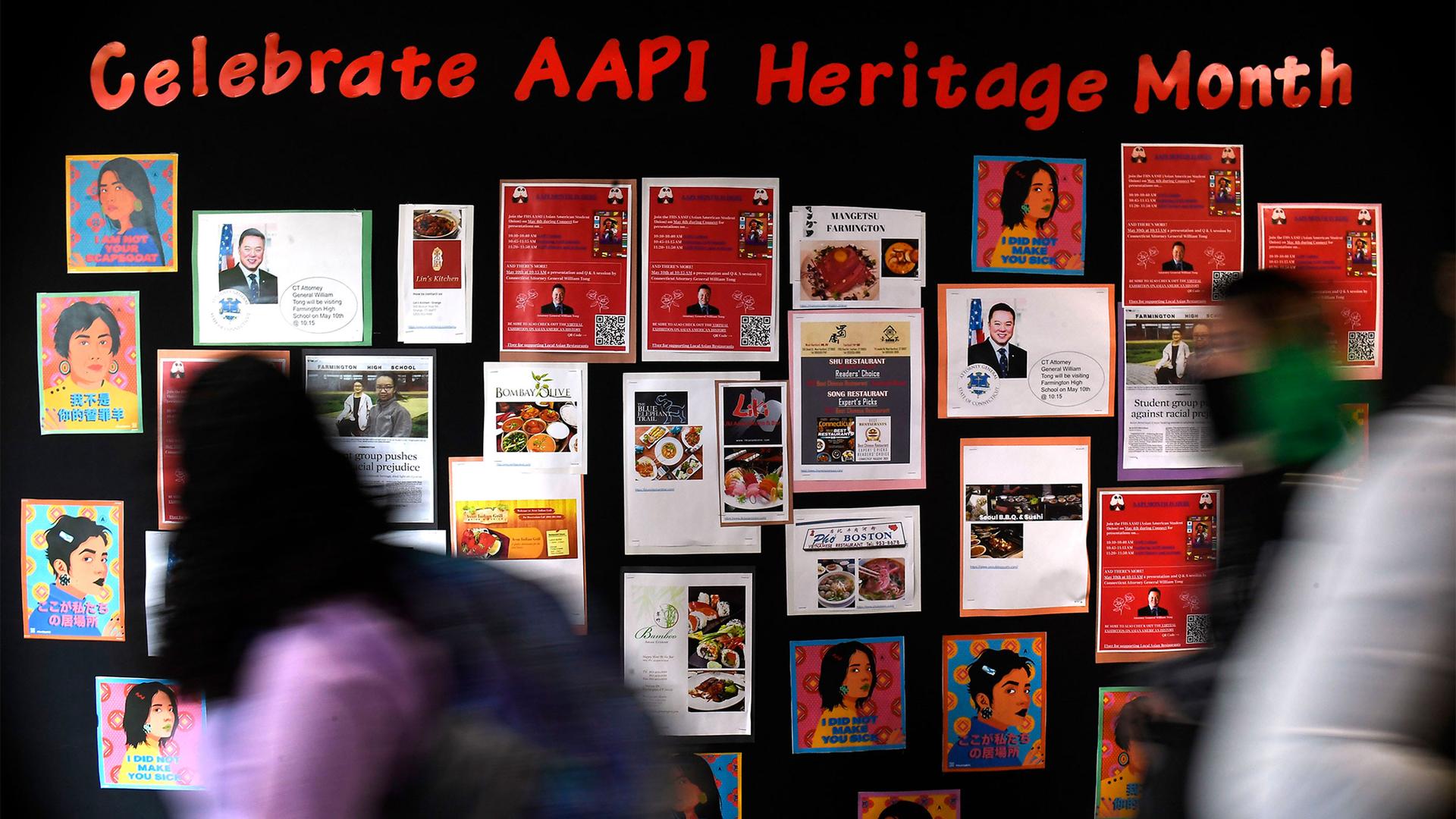Seventeen-year-old Mary Manching has spent the last few months virtually meeting with other teens and community advocates. They’ve been strategizing and lobbying lawmakers to make Asian American history mandatory in Illinois public schools.
Growing up, Manching said, she did not see herself — a Filipino American — represented in history textbooks.
“There is so much more to our history.”
“I know I was really upset when I was reading my textbook and I saw that Filipinos, the only mention of us was when [President William] McKinley decided to colonize the Philippines, and that there were a ton of Filipino health care workers in America,” she said. “And I felt that, no, there is so much more to our history.”
Related: Chinese students in the US grapple with the rise in anti-Asian hate crimes
She would have liked to learn more at school about how Filipino Americans contributed to US labor movements, for example, Manching said.
“Even just like the story of Larry Itliong and his collaboration with Cesar Chavez, [the] United Farm Workers movement and the hard work and the strong activism, is just incredibly moving.”
Illinois could become one of the first states to require public elementary and high schools to teach a unit on Asian American history — if it’s signed into law in the next few months. Other states, like New York and Wisconsin, have proposed something similar.
This comes as anti-Asian violence increases across the US, said Grace Pai, director of organizing at Asian Americans Advancing Justice Chicago, a nonprofit organization. Pai said education can be a long-term solution to help address that violence.
Related: ‘How to Report a Hate Crime’ booklets empower Asian Americans amid rise in discrimination
“Asian Americans have been the scapegoats for various issues throughout our history.”
“Asian Americans have been the scapegoats for various issues throughout our history, whether it’s Asian Americans, and Chinese Americans in particular, being blamed for COVID-19, or the way that Asian Americans were really vilified in the ’80s during the US auto crisis,” she said.
She’s referring to the time when the US car industry crashed in the ’80s. It could not compete with imported cars from Japan. Many unemployed auto workers blamed Asian Americans.
And discrimination against Japanese Americans and immigrants during WWII was endorsed at the federal level. President Franklin D. Roosevelt used Executive Order 9066 to incarcerate people of Japanese descent in isolated internment camps from 1942-1945 in response to the attacks on Pearl Harbor.
Related: A new film explores the stories of 6 men from China who survived the Titanic sinking
Pai said that while there’s bipartisan support to teach Asian American history at schools, there’s been pushback. Some Republican lawmakers say they worry there isn’t money for this new requirement.
Pai said there is too much at stake if a unit isn’t mandated.
“The way that US history, American history, is being taught is incredibly one-sided, it’s not inclusive, it’s not diverse, it doesn’t reflect the reality of our histories, and we have to take a stand. If we don’t require it across the board, it’s not going to happen,” she said.
The state proposal includes resources for teachers, such as lesson plans. A PBS documentary series, “Asian Americans,” is included in that curriculum.
Other critics argue that talking about race is what makes people racist, or talking about differences is what makes people biased.
Sarah-SoonLing Blackburn, an educator and professional learning facilitator on topics covering anti-racist and social justice education based in Oxford, Mississippi, said that that particular argument is false. Not allowing children to ask questions could lead to the biases and stereotypes perpetuated by popular media, she said.
“We have to be able to talk about [these problems].”
“If we want to change that and we want to create better experiences for all people in this country, we have to look these problems in the face. And that means we have to be able to talk about it,” she said.
Related: Dedicated BTS fans buy tickets to join virtual K-pop concert
Still, there’s caution about painting Asian Americans as a monolith.
There tends to be this large focus on East Asian history, when we are talking about Asian history, Manching, the high school senior in Chicago, said. She’s hopeful more communities are covered in the classroom.
Blackburn suggests making this diversity a talking point in discussions.
“If perspectives are missing, how do we help bring them in? And how do we help students ask those questions as well?”
Manching said there’s a sense of relief and excitement for the new generation of Asian Americans — like her younger brother, who’s in seventh grade, and her sister, who’s a freshman in high school, and who might get a different classroom experience than Manching did.
“It’s a very surreal and very touching moment for me, just as someone who cares deeply about them. But I think, you know, my hope is that they can see themselves finally be represented.”
